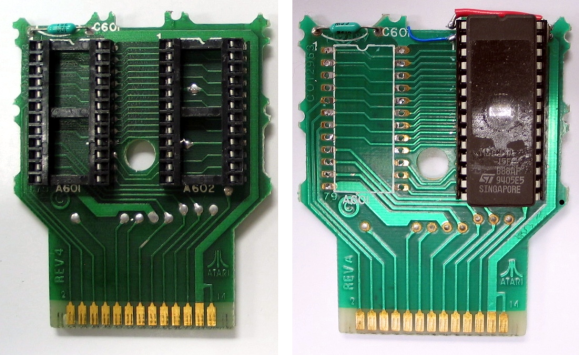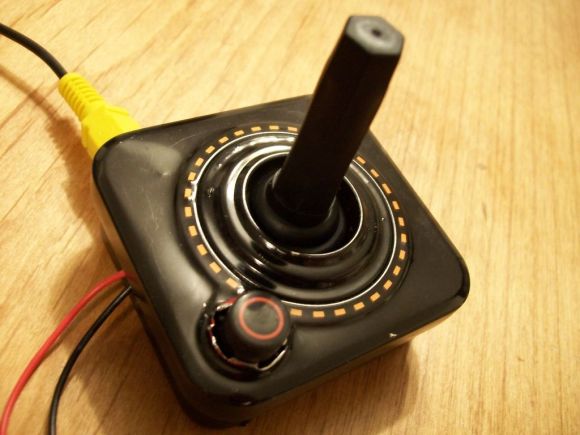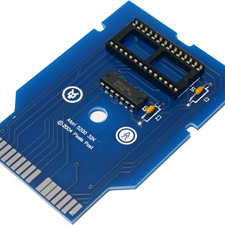
[FozzTexx] had an old Atari 800 collecting dust and decided to pull it out and get to work. The problem is that it’s seen some rough storage conditions over the years including what appears to be moisture damage. He’s read about a cartridge called SALT II which can run automatic diagnostics. Getting your hands on that original hardware can be almost impossible, but if he had a flashable cartridge he could just download an image. So he bought the cheapest cartridge he could find and modified it to use an EPROM.
When he cracked open his new purchase he was greeted with the what you see on the left. It’s a PCB with the edge connector and two 24-pin sockets. These are designed to take 4k ROMs. He dropped in an EPROM of the same size but the pin-out doesn’t match what the board layout had in mind. After following the traces he found that it is pretty much an exact match for an Intel 2764 chip. The one problem being that the chip has 28-pins, four too many for the footprint. The interesting thing is that the larger footprint (compared to the 2732) uses all the same pins, simply adding to the top and moving the power pins. A small amount of jumper wire soldering and [FozzTexx] is in business.
















